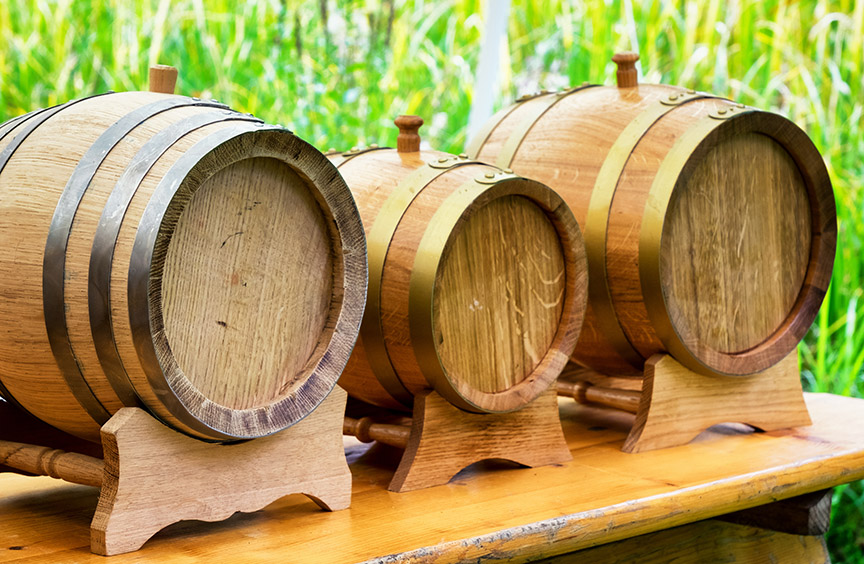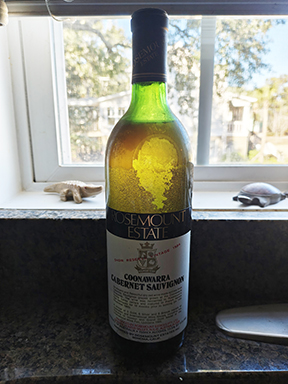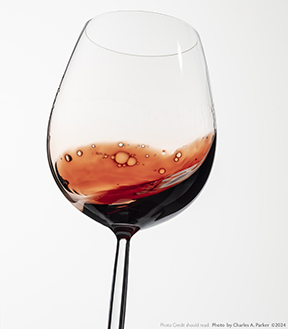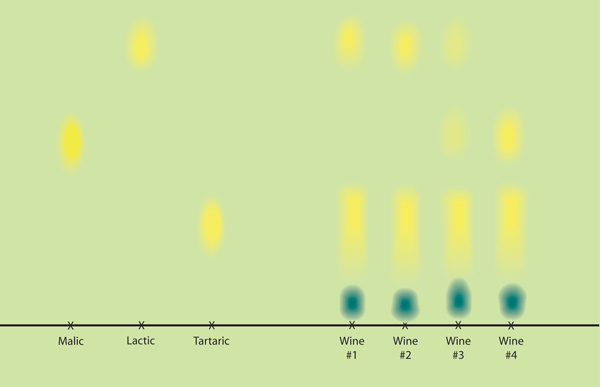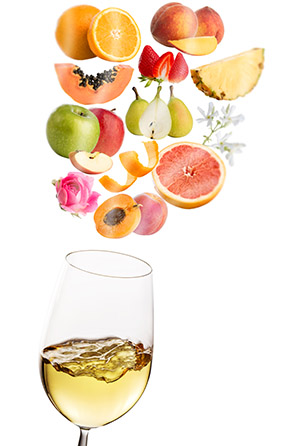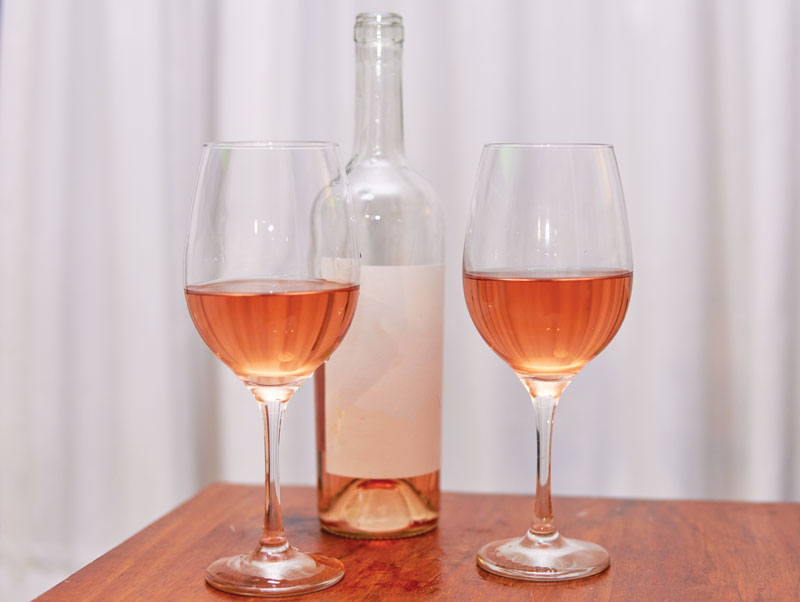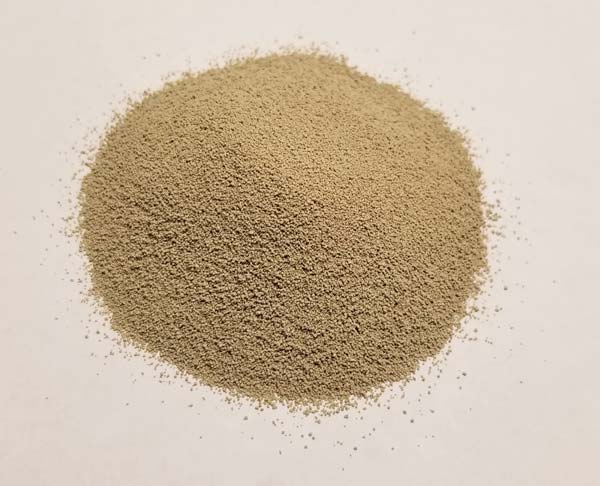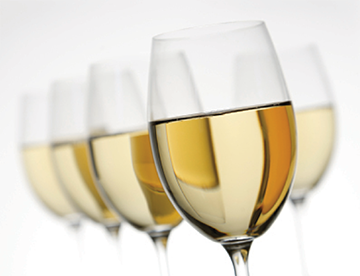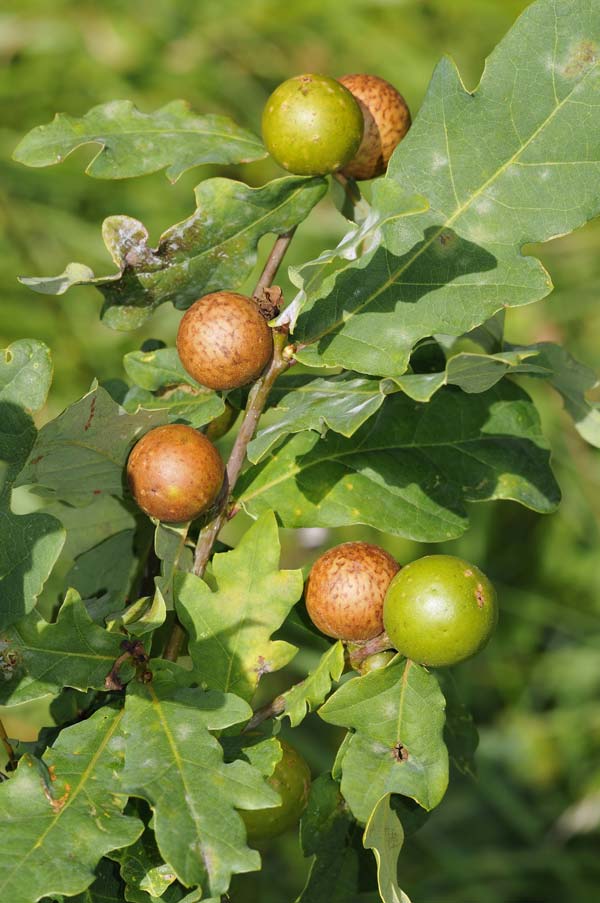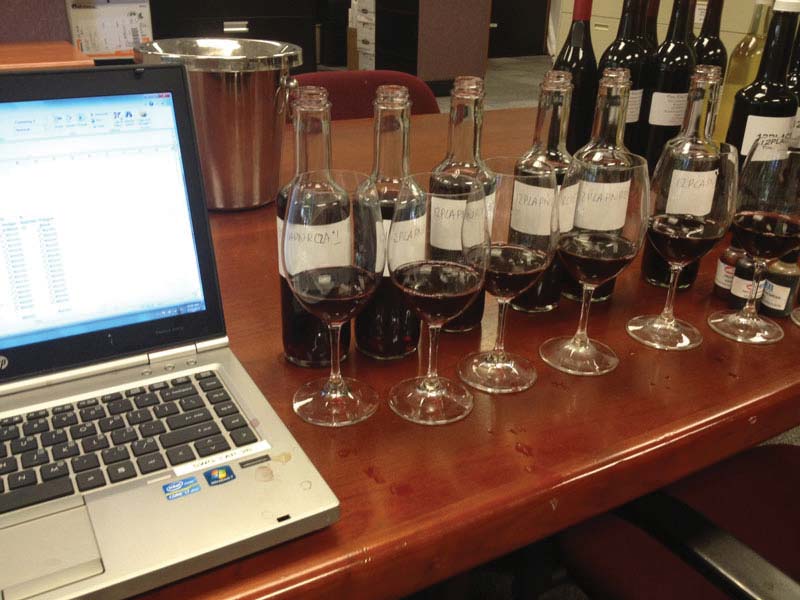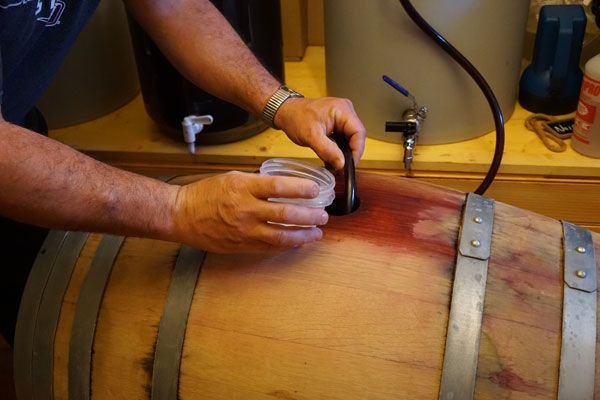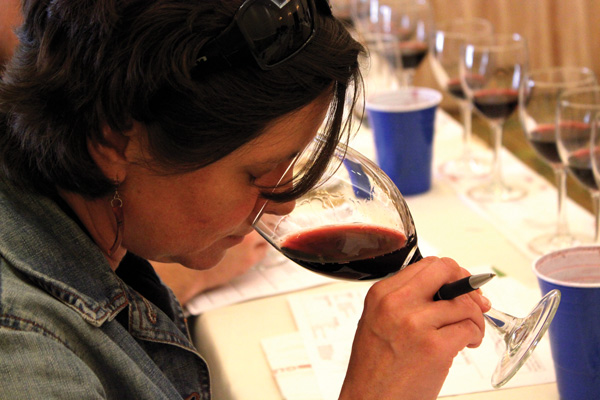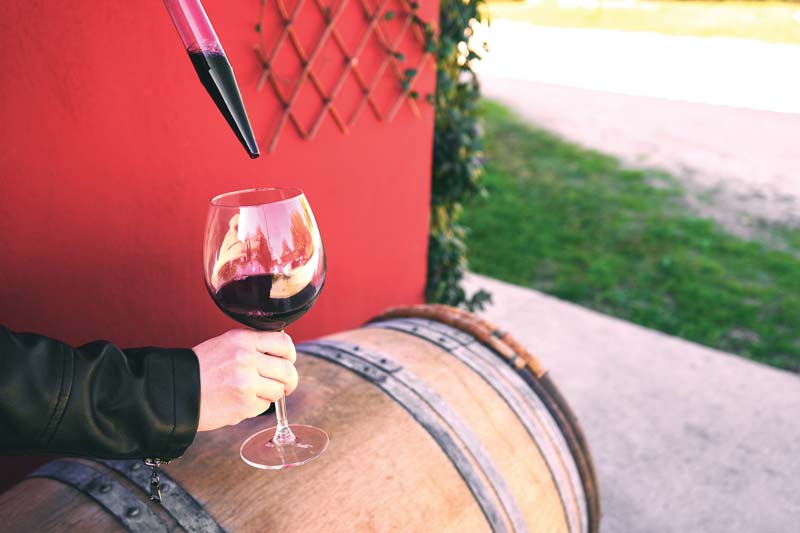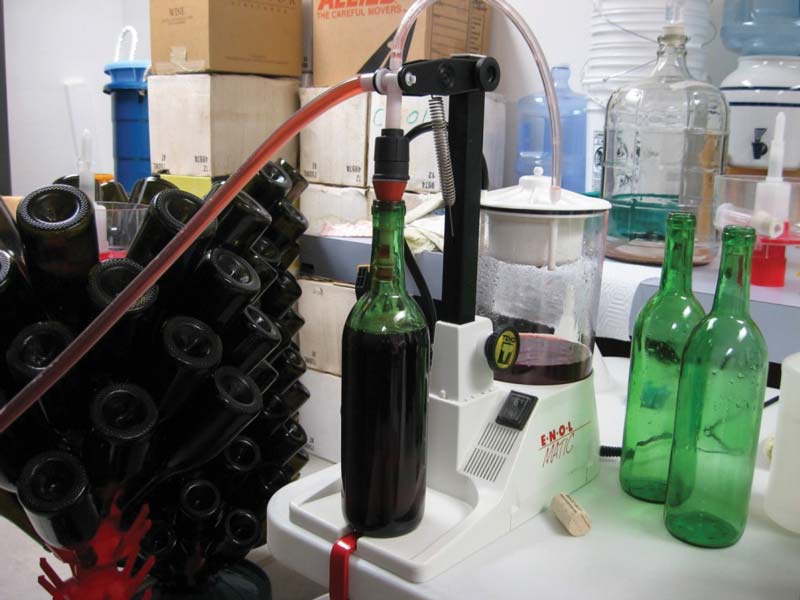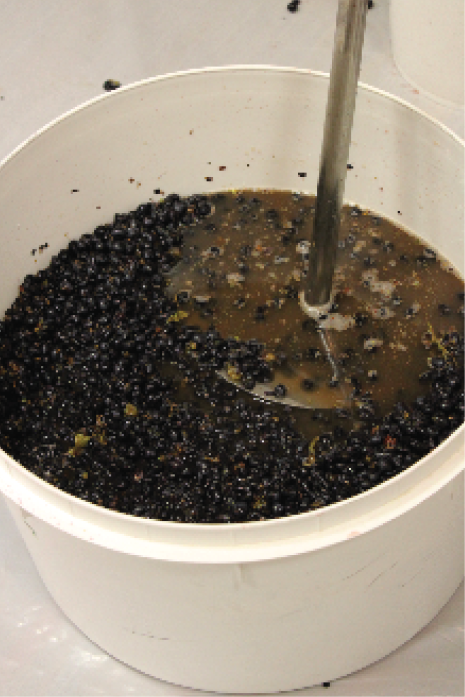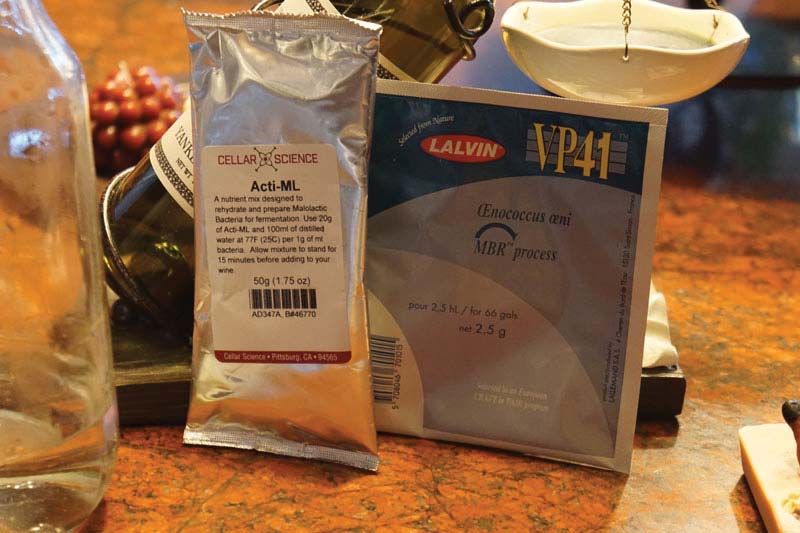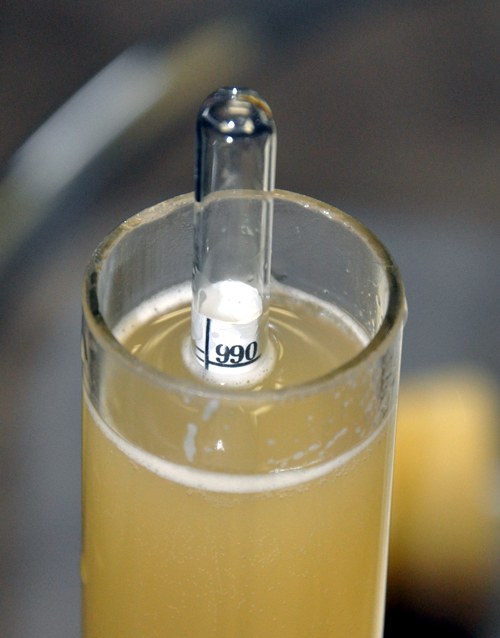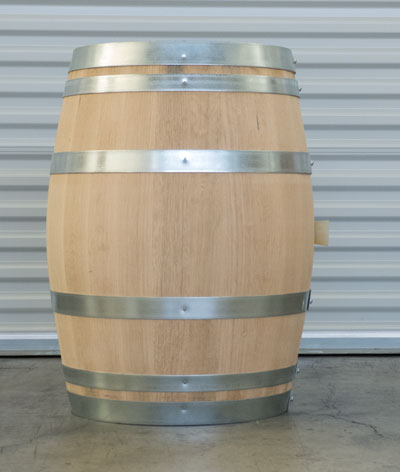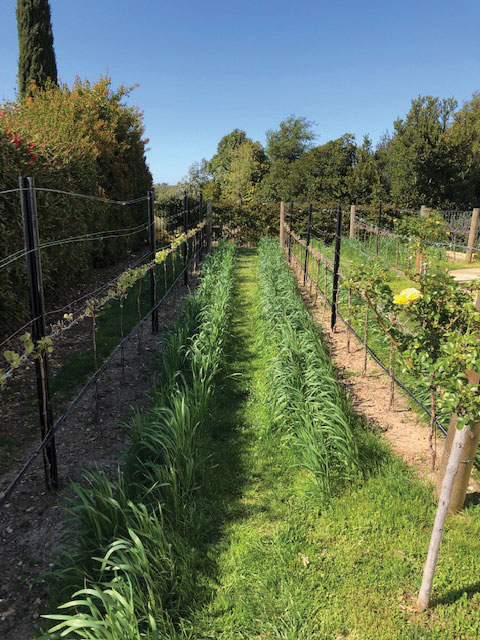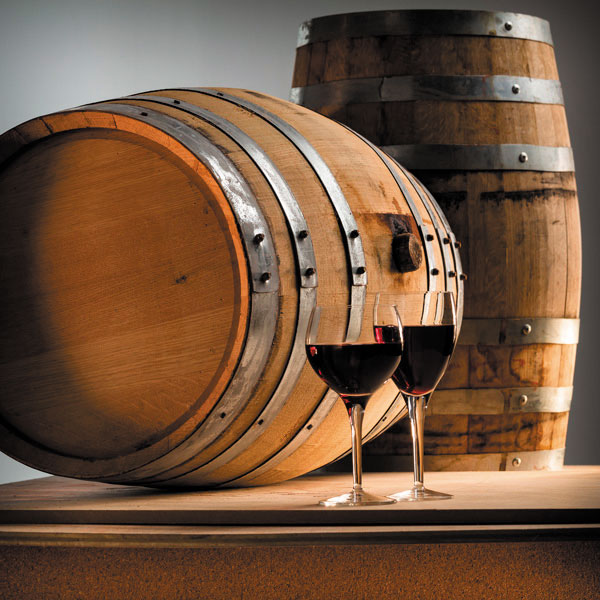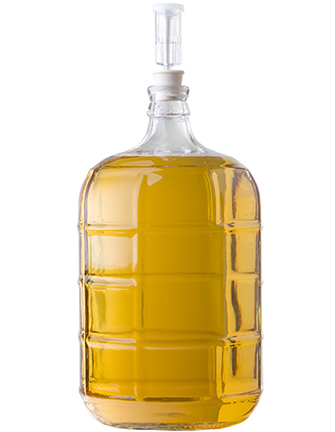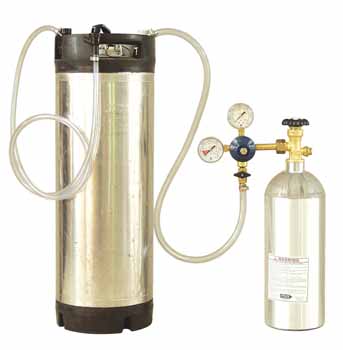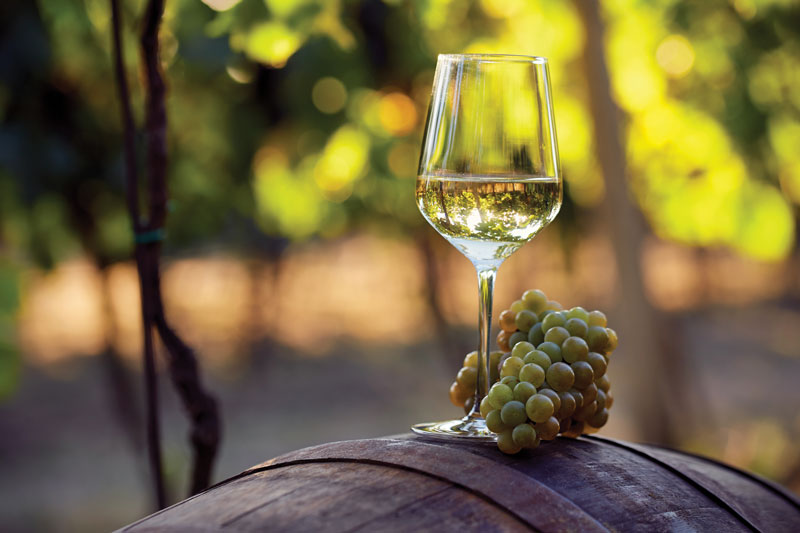Topic: Wine-Wizard
Small Barrels, Unwanted Secondary Ferments, Natural Ferments, & Cold Stabilization
The Wine Wiz explains the differences winemakers must consider when aging wine in smaller-volume oak barrels. She also troubleshoots an unwanted secondary fermentation, explains that all fermentations are “natural,” and offers tips for cold stabilization.
A Ghost of Cabernet Past, Swing-Top Bottles & Bottle Shock
A 40-year-old Cabernet Sauvignon that’s now as white as a ghost? Oh no! The Wine Wizard gets to the bottom of this spooky phenomenon and also discusses the pros and cons of bottling wine in swing-top bottles and how to combat bottle shock.
Browning in Red Wines, MLF Test Strips, & Maple Wine
The Wine Wizard fields questions on eliminating (and avoiding) browning in red wines, malolactic fermentation test strips, and techniques for making wine from maple sap.
Monitoring Malolactic, Adding Skins, Timing Purchases, Airlocks
The Wine Wizard shares the signs to look for and ways to monitor malolactic fermentation, offers tips on adding supplemental grape skins to a red wine, and when to move a red wine’s fermentation from open containers to under an airlock.
Timing Purchases
That’s a great question and one, like so much in winemaking, that can be answered by a bit of a compromise. You’re on the right track by ordering your supplies right before
Boosting Aromatics, Removing Carboy Stains, Mycoderma, and Sanitation
The Wine Wizard offers steps to increase aroma for aromatic white wines. Plus, how to remove stains from glass carboys, whether high-proof alcohol is a match for mycoderma, and why the combination of sulfur dioxide and citric acid works well for sanitation.
Underripe Red Grapes, Malolactic Tips, and General Fermentation Guidelines
In the face of a cool growing season, contending with underripe grapes can be a challenge. The Wiz has some ideas for one grape grower who just couldn’t get their Syrah to full maturity. Also, get some pointers for a healthy malolactic fermentation and alcoholic fermentation.
Reducing Bitterness, Micro-oxygenation On A Small Scale, and Deacidification Tactics
Citrus fruits contain a lot of interesting flavors, but making wine with them can be a challenge. Get advice on removing the bitterness that comes with the rinds as well as micro-oxygenation advice for small-scale winemakers, and how to best deacidify a wine.
Screw-top Bottle Closures, Aging Temperatures and Blueberry Woes
A winemaker has saved up a bunch of commercial screw-cap bottles and wants to know what cork size fits best in that style of bottle. Learn why it is not a good idea to cork those bottles. Also get advice on aging wine temperatures and volatile acidity in blueberry wine.
Balanced, Low-Alcohol Wines and Reducing Water Consumption
There has been growing interest in reduced alcohol wines in recent years as the health benefits and caloric reduction is lauded by the medical world. The Wine Wizard offers tips to a home winemaker looking to produce their own lower-alcohol wine. Another winemaker is trying to find ways to reduce their water usage in the winery.
Sacrificial Tannins Explained, Yeast Rehydration, and Stabilizing A Fruit Port
The term “sacrificial tannins” is something that gets casually tossed into the winemaking lexicon by those who have been in the trade for a while . . . but what does it really mean? Get an explanation along with tips for rehydrating dry yeast and techniques to properly stabilize a fortified wine.
Blending Guidance and Smoke Taint Mitigation
Winemaking may be more a science, but blending is definitely an art. The Wizard has some tips for a rookie winemaker looking to possibly blend five different wines. Also, make sure you’re up on the latest knowledge and mitigation methods surrounding the phenomenon known as smoke taint.
Oak-Aging Advice and Strategies for a Chaptalization Mistake
Maintaining wine while it ages in oak is an important task. Make sure you are taking the appropriate steps. Also, a winemaker can’t get their latest wine to start fermentation. The Wine Wizard unravels the mystery behind the unfermentable juice.
Tasting Wine In Stages and Bottling Blues
As a winemaker evolves, learning how to evaluate their wine during different stages of maturation can be key. The Wine Wizard has some thoughts on what to expect when tasting wines at various young ages as well as kegging homemade wine.
Using The Smoke, Campden Tablets, Getting Grape Updates, and Some Pearls of Wiz-dom
With wildfires on the rise in many wine regions around the world, smoke taint has become a common phrase. Learn about it and ways winemakers may be able to try to make the best from affected grapes. Also learn about Campden tablets, getting news on grape growing conditions, and some other pearls of wiz-dom.
Bottling Tips and Wine Judge Etiquette
Bottling is typically the final step towards producing wine where a winemaker can foul things up. Get some recommendations from the Wizard on when and how to bottle your wines. Also get some pointers on proper etiquette of being a wine judge.
Practical Advice For Oak Chips and Volatile Acidity
Q I am using Flextanks and oak chips for my wine and am really liking the results. However, I put the oak chips in loose and they clog up the tubing and
Malolactic-palooza and The Importance Of pH
Malolactic fermentation can be finicky even for professional winemakers, but there are protocols winemakers can follow to help avoid the headache (and heartache). Learn those along with best practices for a post-fermentation acid adjustment.
Fermentation Completion, Vinegar Storage Space and Cantaloupe Wine
A winemaker is left scratching their head when a wine that seemingly has fermented dry is still producing bubbles. The Wizard also provides suggestions for vinegar storage and the possible cause of odd-colored speckles on a cantaloupe wine.
Matching Quality Grapes With Oak And The Complexities Of Raspberry Wine
When a winemaker gets their hands on some highly coveted Cabernet Sauvignon grapes, he wants to make sure that the oak quality matches the grape. But he balks at the price tag of a new oak barrel. Get some tips for high-quality oak alternatives and ways to correct a raspberry wine with weird numbers.
Uneven Ripening, Sensing Ripeness, and Killer Yeast
It’s hard to get universal ripening of your grapes in a small vineyard with lots of variability. The Wizard provides some pointers as well as clues to determining grape ripeness when the refractometer is left home. Plus, the threat of contamination from “killer” yeast.
Preserving Oak Barrels, Oversulfited Wine, Film on a Carboy, and Beginner Tips
What is the best way to store oak barrels that don’t have wine in them? Get the answer from the Wine Wizard, as well as her advice for a case of oversulfited wine, removing white film from a glass carboy, and five tips for a rookie winemaker.
Top Me Off, Rules of Fining, and Achieving Cold Stable Wines
Get some pointers and considerations a winemaker needs to keep in mind when topping off your aging wine vessels. The Wizard also answers questions on fining agents and malolactic fermentation after cold stabilizing a wine.
Protecting Your Wine, Cap Temperature, Copper Sulfate Additions, and Carbonation Help
Oxidation is one of the most common faults among homemade wines. The Wiz has some tips for minimizing exposure during racking along with advice for how to read fermentation temperature, reducing reductive stink with copper, and carbonating a dessert wine.
More Butter, Please; Caveats with Pectic Enzymes; and Wonky Grape Numbers
Not everyone loves a buttery Chardonnay but for those that seek out this characteristic the Wine Wizard has some sage fermentation advice to achieve buttery bliss. Also, one reader wonders about adding pectic enzymes in a red wine and another is perplexed by the numbers in his recently purchased juice.
